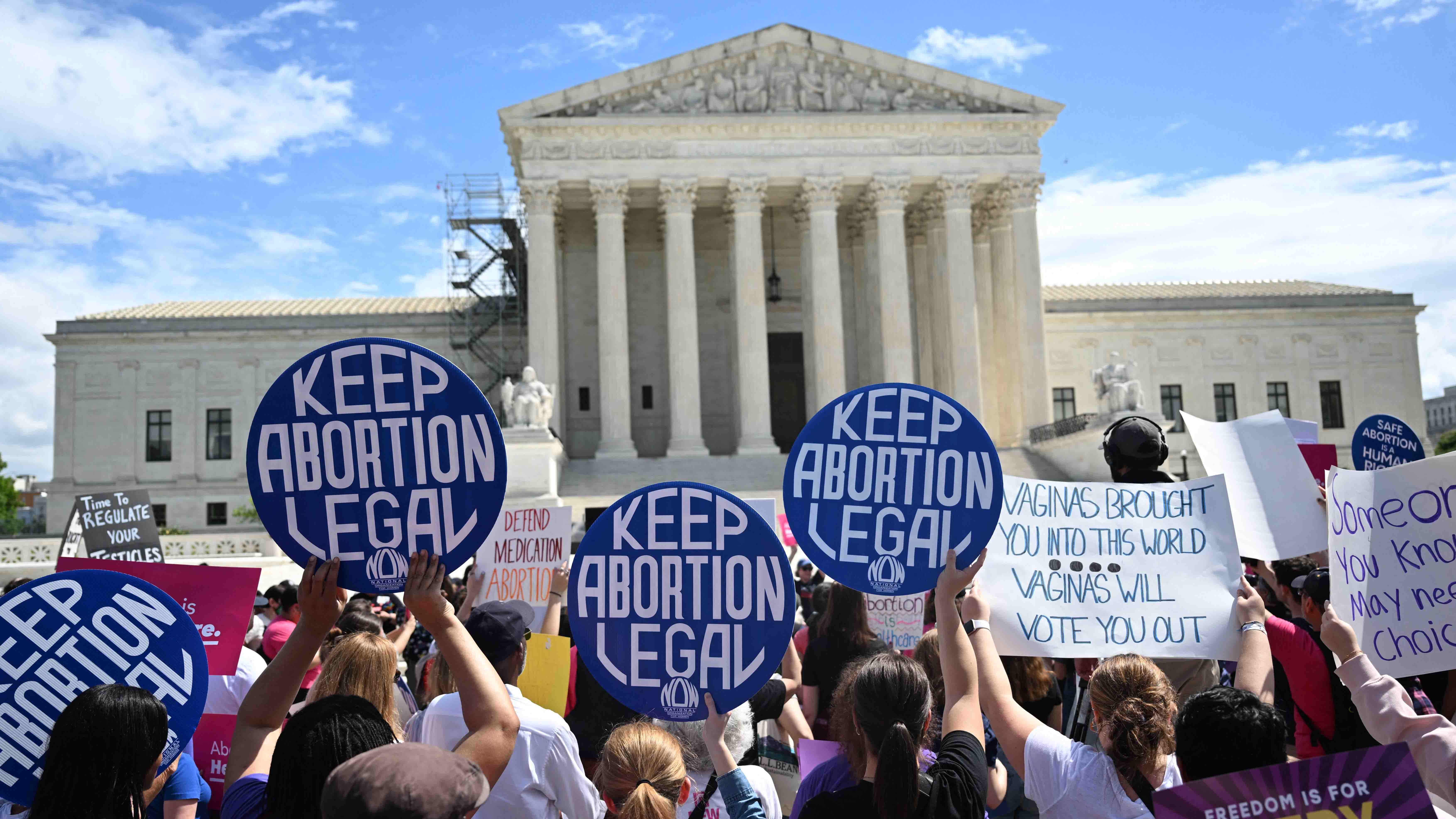The Supreme Court's conservative majority struck down a Trump era-ban on bump stocks, the gun attachments that allow semi-automatic weapons to fire rapidly like machine guns, saying it violates federal law.
The new case is not about the Second Amendment right to “keep and bear arms,” but rather whether the Trump administration followed federal law in changing the bump stock regulation.
The Trump administration imposed the prohibition after the Las Vegas mass shooting in 2017. Many of the weapons were equipped with bump stocks and high-capacity magazines. More than 1,000 rounds were fired into the crowd in 11 minutes, killing nearly 60 people and injuring hundreds more.
Gun rights groups challenged the regulation defining a bump stock as an illegal machine gun under federal law. A lawsuit by a Texas gun shop owner argues that bump stocks don’t change the core function of a semi-automatic weapon enough to make it illegal. The Biden administration says bump stocks fall firmly under the legal definition of machine gun.
Get Southern California news, weather forecasts and entertainment stories to your inbox. Sign up for NBC LA newsletters.
The court's six conservative justices ruled bump stocks do not convert rifles into machine guns Thursday.
Thomas' opinion, writing for the majority, explains that a semiautomatic rifle equipped with a bump stock is not a "machine gun" because it does not fire more than one shot "by a single function of the trigger" as the statute requires. The high court found the Trump administration did not follow federal law when it reversed course and banned bump stocks.
Liberal justices Sonya Sotomayor, Elena Kagan and Ketanji Brown Jackson dissented. They view the majority's definition "artificially narrow" and fear that it "hamstrings the government's efforts to keep machine guns from gunmen, like the Las Vegas shooter."
U.S. & World
News from around the country and around the globe
"When I see a bird that walks like a duck, swims like a duck, and quacks like a duck, I call that bird a duck," Sotomayor wrote in her dissenting opinion.
Bump stocks are accessories that replace a rifle’s stock, the part that rests against the shoulder. They harness the gun’s recoil energy so that the trigger bumps against the shooter’s stationary finger, allowing the gun to fire rapidly.
They were invented in the early 2000s. Under Republican President George W. Bush and Democrat Barack Obama, the Bureau of Alcohol, Tobacco, Firearms and Explosives decided that bump stocks didn’t transform semi-automatic weapons into machine guns. The agency reversed that decision at Trump’s urging after the shooting in Las Vegas and another mass shooting at a Parkland, Florida, high school that left 17 dead.
The plaintiffs argued that rifles with bump stocks are different from machine guns because the trigger keeps moving and the shooter must continue to exert pressure on the weapon.
Government lawyers pointed out that traditional machine guns also require pressure from the shooter. They argued bump stocks fall under the legal definition of machine guns because the shooter’s finger stays still while the gun fires hundreds of rounds per minute.
Brian Fletcher, principal deputy solicitor general, said that the ATF’s previous findings were less in-depth than the review it undertook under Trump.
There were about 520,000 bump stocks in circulation when the ban went into effect in 2019, requiring people to either surrender or destroy them, at a combined estimated loss of $100 million, the plaintiffs said in court documents.
During oral arguments earlier this year, conservative Justice Neil Gorsuch questioned the Justice Department about the effects of the about-face on the millions of people who bought bump stocks while they were legal. Fletcher responded that the Justice Department doesn’t intend to prosecute people who turned in their bump stocks under the new rule, though he later indicated that people who bought them after the rule was finalized could potentially face prosecution.
Bump stocks are banned in these states
Out of the 50 states, there are 15 with laws that ban bump stocks. Each state defines these devices differently but all recognize the danger and threat to public safety.
District of Columbia also has a ban on bump stocks.
Here are the 15 states with bans:
- California
- Connecticut
- Delaware
- Florida
- Hawaii
- Iowa
- Illinois
- Indiana
- Louisiana
- Maryland
- Massachusetts
- Minnesota
- Nevada
- New Jersey
- Rhode Island
- Virginia (DC included)
- Washington



